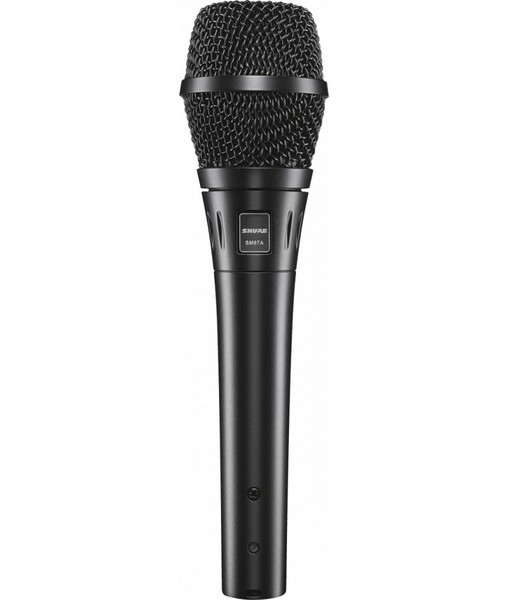AudioSM87A SHURE vocal microphone, static hypercardioid


Quantity
ex
Project List Available
Description
Characteristics
Share
Product file
The Shure Model SM87A is a professional-quality, handheld condenser microphone for use in sound reinforcement, broadcasting, and studio recording installations. Its super-cardioid polar pattern provides greater rejection of unwanted sound sources, making it ideal for miking individual instruments in a multi-microphone setting or for miking single sources in a reverberant or noisy environment. The SM87A features a controlled low-frequency roll-off tailored for optimum peformance when close-miking sound sources. An integral three-stage wind and pop filter protects against wind and breath noise. Its built-in shock mount reduces stand and handling noise. The SM87A operates on phantom power. *Features -Uniform supercardioid pick-up pattern for maximum gain before feedback and superior rejection of off-axis sound -Smooth, wide frequency response with gradual presence rise and controlled proximity effect tailored for vocals -Steel mesh grille and satin finished aluminum construction resist wear and abuse -Very low susceptibility to RF and electromagnetic hum -Minimally affected be varying load impedances -Phantom powered-Performs over a wide range of temperature and humidity conditions -Cartridge shock mount system absorbs mechanical shock and minimizes handling noise -Built-in pop filter reduces undesirable wind and breath noise -Shure quality, ruggedness, and reliability
*General Rules for Use -Do not cover any part of the microphone grille with your hand, as this will adversely affect microphone performance. -Aim the microphone toward the desired sound source (such as the talker, singer, or instrument) and away from unwanted sources. -Place the microphone as close as practical to the desired sound source. -Work close to the microphone for extra bass response. -Use only one microphone to pick up a single sound source. -For better gain before feedback, use fewer microphones. -Keep the distance between microphones at least three times the distance from each microphone to its source (“three to one rule”). -Place microphones as far as possible from reflective surfaces. -Add a windscreen when using the microphone outdoors. -Avoid excessive handling to minimize pickup of mechanical noise and vibration. *Specifications -Type: Electret Condenser -Frequency Response:50 to 20,000 Hz -Polar Pattern: Supercardioid -Output Impedance: EIA rated at 150 Ω (100 Ωactual) -Sensitivity: at 1 kHz, open circuit voltage -52 dBV/Pa (2.4 mV)[1] -Maximum SPL:1 kHz at 1% THD, 1 kΩ load140 dB -Signal-To-Noise Ratio: Ref. 94 dB SPL at 1 kHz70 dB[2] -Dynamic Range: at 1 kHz, 1 kΩ load116.5 dB -Clipping Level: 1 kHz at 0.25% THD, 1 kΩ load-6 dBV (0.5 V) -Self Noise: typical, equivalent SPL, A -weighted24 dB -Polarity: Positive pressure on diaphragm produces positive voltage on pin 2 with respect to pin 3 -Net Weight: 0.20 kg (0.44 lbs) -Connector: Three-pin professional audio (XLR), male -Housing: Aluminum construction with steel grille and satin black finish -Power Requirements: 11 to 52 V DC (1.2 mA) phantom power[1] 1 Pa=94 dB SPL[2] S/N ratio is difference between 94 dB SPL and equivalent SPL of self noise,Aweighted